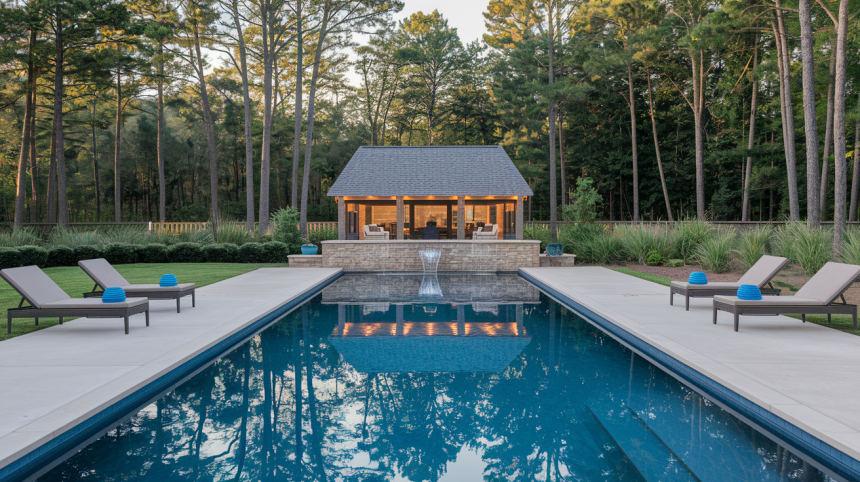You’ve stood in your backyard, visualizing the perfect swimming space that fits just right—not too large to dominate your property, but long enough for a proper swim.
Getting your lap pool dimensions right matters more than you might think. It’s the feature that can transform your property into a personal fitness center and relaxation spot.
Where you can maintain your exercise routine regardless of public pool schedules.
This guide will help you understand the ideal lap pool dimensions. You’ll learn how much space you really need for effective swimming.
Let’s figure out how to create a lap pool that gives you the swimming experience you desire.
Lap Pool Size: What’s the Ideal Dimension?
The question of “how big should a lap pool be?” has no single correct answer.
Pool sizes vary widely depending on your available space, budget, and personal fitness goals. While some swimmers need regulation distances for training, others might be satisfied with shorter lengths that still provide good exercise opportunities.
Let’s break down the typical lap pool dimensions you’ll find across different property types and swimming needs.
This should give you a clearer picture of what might work for your specific situation.
Standard Lap Pool Dimensions By Type

Here’s a helpful reference guide showing common lap pool sizes across different applications:
| Pool Type | Average Length (ft) | Average Width (ft) | Depth (ft) |
|---|---|---|---|
| Competitive | 75 – 82 | 6 – 8 | 4 – 6 |
| Residential Training | 40 – 50 | 8 – 10 | 3.5 – 5 |
| Limited Space | 30 – 35 | 8 – 10 | 3.5 – 4.5 |
| Swim Spa | 12 – 18 | 7 – 8 | 3.5 – 4.5 |
Keep in mind that these are general guidelines. Your actual pool may vary based on your property layout, local building codes, and personal requirements.
The important thing is finding a pool size that meets your swimming needs while still fitting comfortably within your available space.
Key Factors That Influence Lap Pool Size
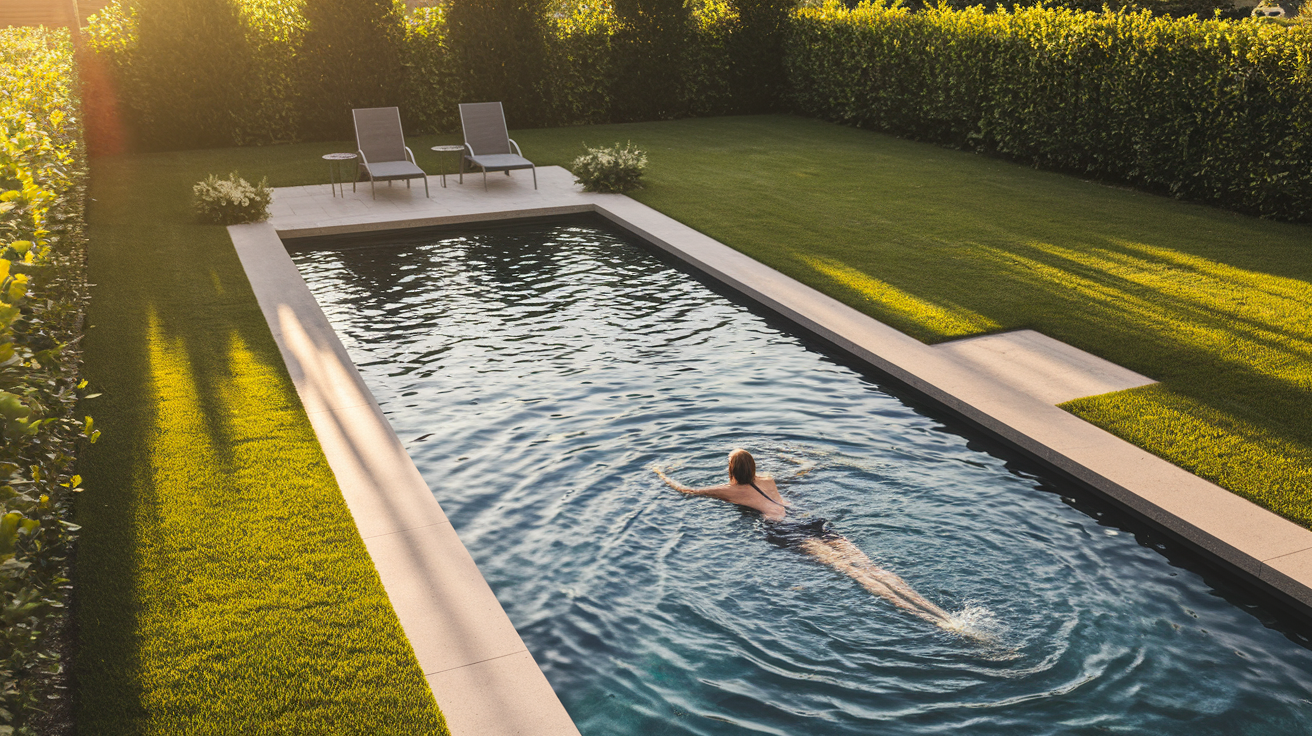
When planning your lap pool, several key factors determine the ideal size. Here’s what to consider before finalizing your pool dimensions.
1. Your Swimming Needs
How do you plan to use your lap pool? Is it just for casual exercise? Or more?
Some people want a pool long enough for serious training, while others need a multipurpose pool that can be used for exercise and family enjoyment.
Maybe you’re looking for therapeutic swimming with resistance features. Your swimming habits should shape your pool size. For more diverse activities, adjusting the traditional lap pool shape might be necessary.
2. Available Space & Property Layout
Your property dictates what’s possible—this is non-negotiable.
Measure your available space carefully, accounting for required setbacks from property lines and structures.
Local building codes typically require pools to be at least 5 feet from property lines, though requirements vary by location. Don’t forget to consider access to construction equipment.
Also, think about:
- Surrounding deck or patio space (minimum 3-4 feet around all sides)
- Equipment pad location (pump, filter, heater)
- Safety fencing requirements
- Access paths to the pool
3. Budget Considerations
Larger pools cost substantially more—in every way.
Each additional foot adds to excavation, materials, and labor costs. Larger pools also require more powerful equipment, more chemicals, and more energy to heat.
A well-designed smaller pool can provide excellent swimming while keeping both installation and ongoing costs manageable.
4. Desired Features & Accessories
Additional features impact the required space.
Will you want steps or a beach entry? Are you planning a hot tub section? Do you need a shallow area for children?
Each of these elements takes space away from the swimming lane or requires additional overall length—plan for these features from the beginning rather than trying to add them later.
5. Long-Term Maintenance Requirements
Maintenance is an ongoing commitment.
Larger pools require more time and resources to maintain properly. More water means more chemicals, more filtering time, and more cleaning.
Consider how much maintenance you’re willing to perform (or pay for) on an ongoing basis.
Design Ideas for Lap Pools
Your lap pool design can make or break your swimming experience. Good design transforms even modest dimensions into functional, enjoyable swimming spaces.
Here are practical ways to maximize your lappool’s potential.
Create a Practical Swimming Lane
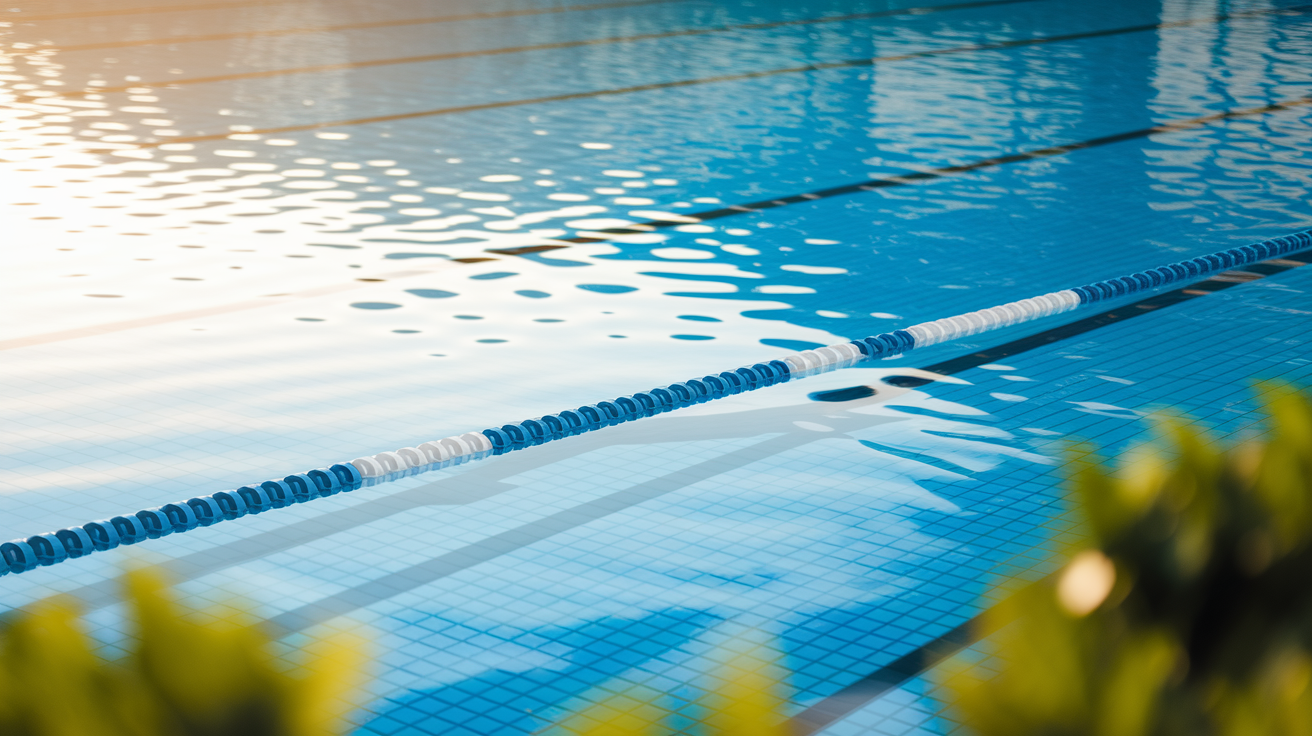
The swimming lane is the core functional element of your lap pool.
Standard competition lanes are 2.5 meters (about 8.2 feet) wide, but residential lap pools often work well with widths between 6 and 8 feet. The minimum recommended length for effective lap swimming is about 30 feet, though longer is better for serious swimmers.
Try this: Swim at different pools before finalizing your dimensions. The experience of swimming in various-sized lanes can help inform your decision.
Quick tips:
- Mark your proposed pool outline with spray paint or string to visualize it in your space
- Consider a center-line marker on the pool bottom for swimming guidance
- If possible, orient the pool north-south to reduce sun glare while swimming
- Include well-placed entry/exit points that don’t interfere with the swimming path
A good lap pool layout feels purposeful. You should be able to swim continuously without awkward turns or obstacles.
Provide Adequate Depth for Safe Swimming
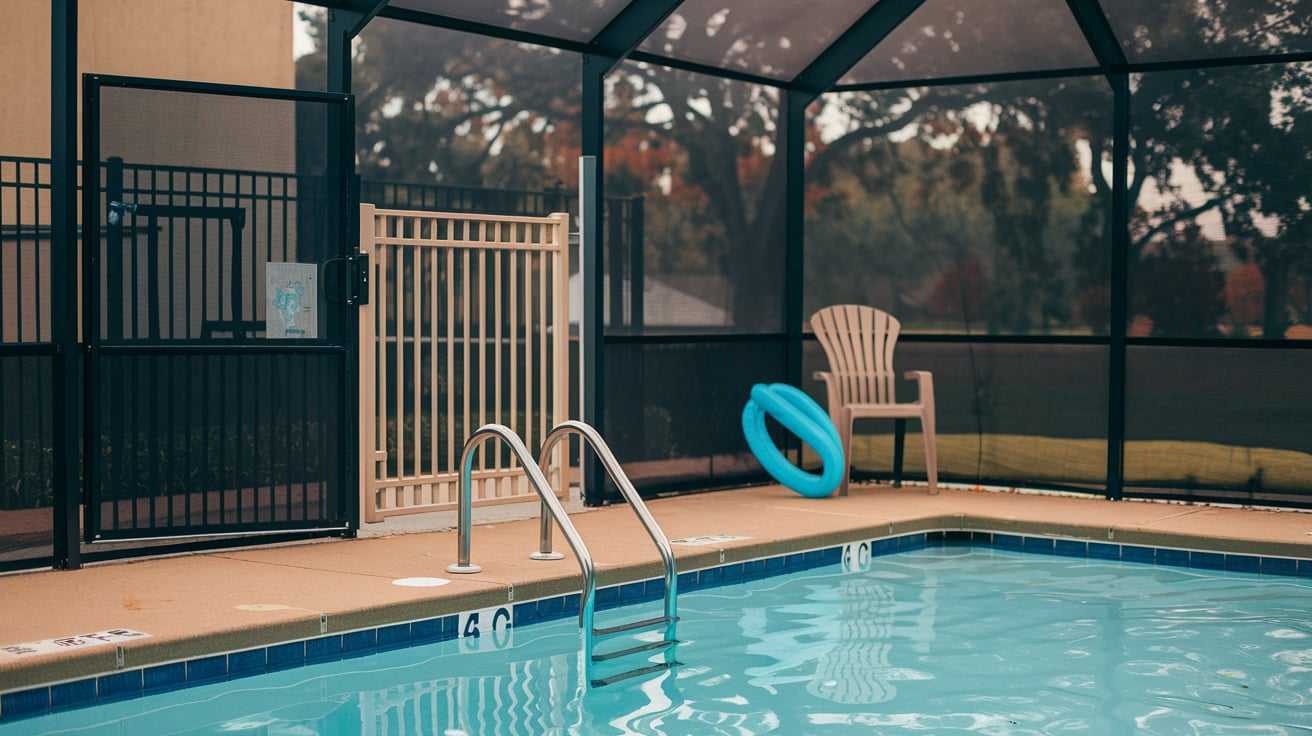
Depth matters for both safety and swimming comfort.
For regular lap swimming, a depth between 3.5 and 5 feet provides enough water to prevent hitting the bottom during strokes while still allowing standing rest breaks.
Competitive pools may be deeper, while therapeutic pools might be shallower.
Quick tips:
- Consider a slight depth gradient if you want both shallow and deeper sections.
- Remember that deeper water costs more to heat and maintain
- Include depth markers along the pool sides for safety
- Install adequate underwater lighting for evening swimming
Uniformly flat bottoms are easier and less expensive to build than contoured ones.
Incorporate Effective Entry and Exit Points
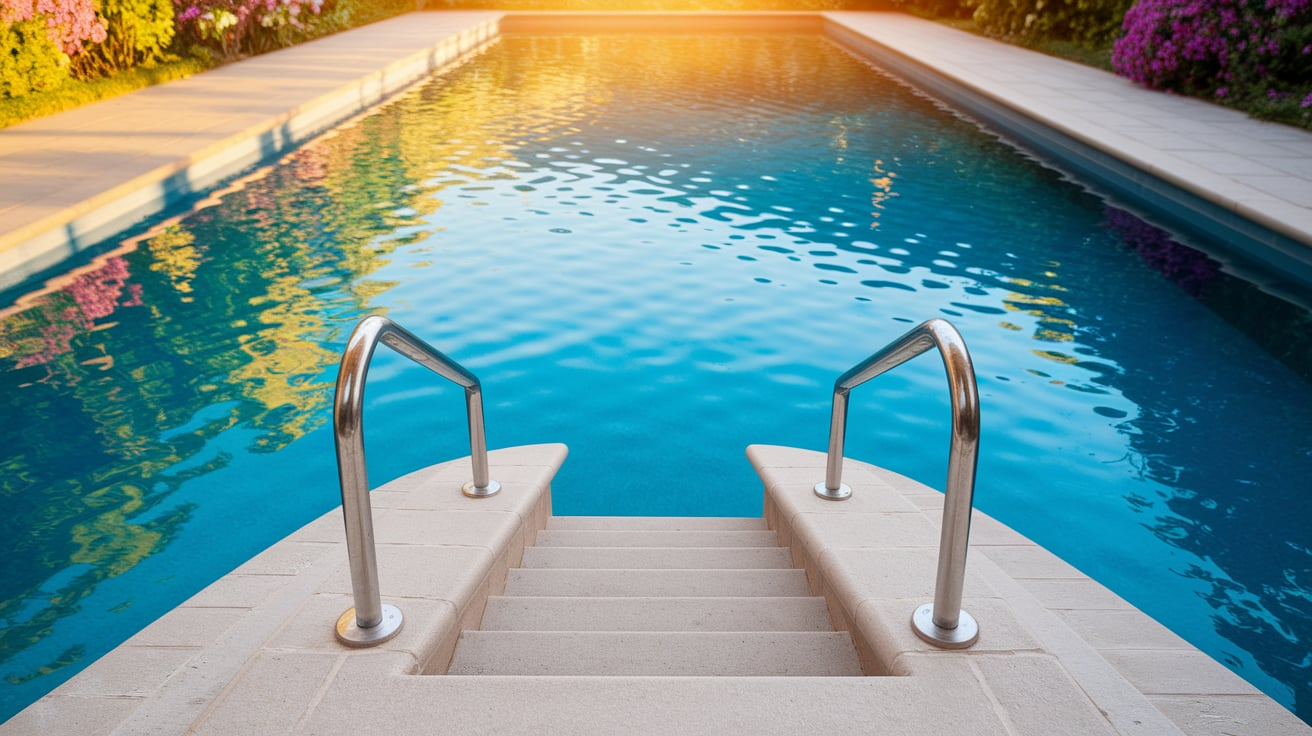
Getting in and out safely affects your daily swimming experience.
Position steps or ladders at the ends of the pool, never along the sides where they would interrupt the swimming lane.
Recessed steps at one end provide easy access without reducing the swimming length.
Quick tips:
- Include at least two entry/exit points for safety
- Ensure steps have contrasting color edges for visibility
- Consider underwater bench seating at one end for resting
- Install handrails that extend above the deck for easier exit
Good entry points should feel intuitive and safe for all planned users.
Select Appropriate Finishes for Performance
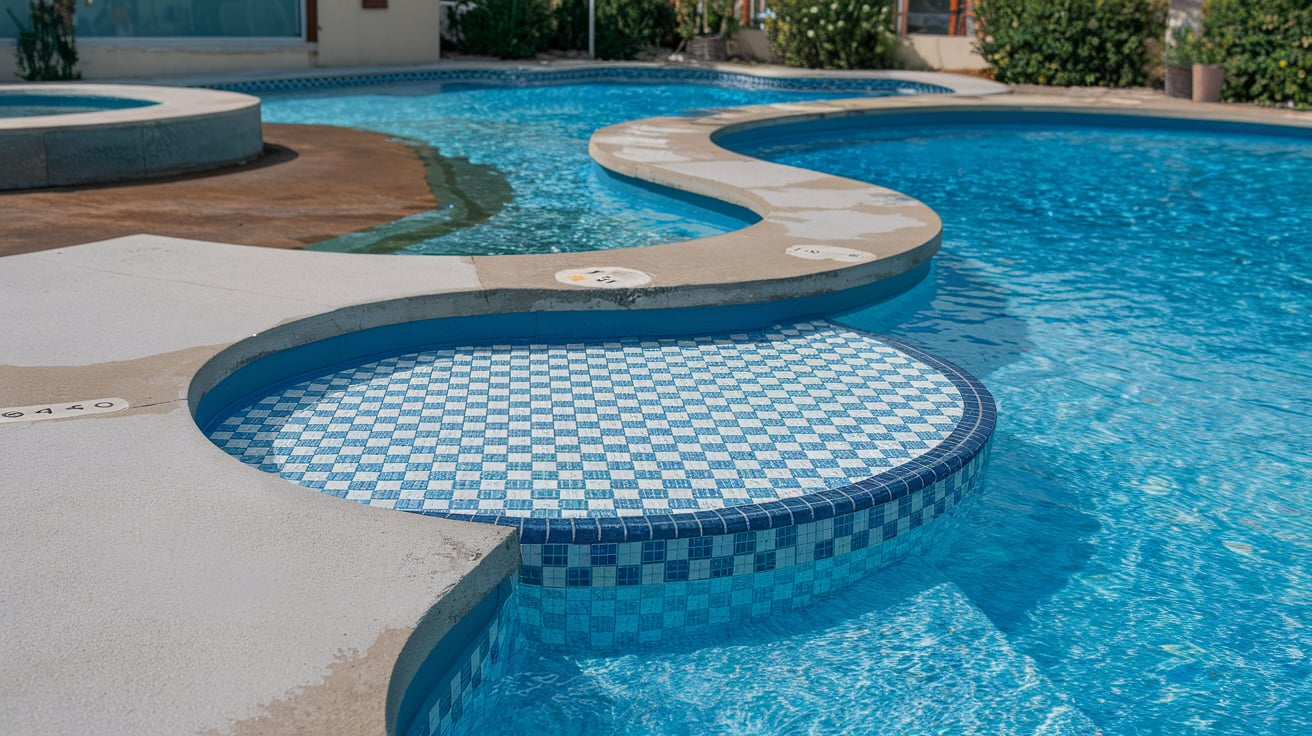
Pool finishes affect both appearance and swimming experience.
Darker finishes absorb more solar heat (beneficial in cooler climates) but make it harder to see the bottom.
Lighter finishes reflect more light and make depth perception easier—lane markers on the bottom help with orientation during swimming.
Quick tips:
- Choose non-slip finishes for all underwater surfaces
- Consider darker finishes for better heat retention in cold climates
- Add lane lines on the bottom for proper orientation
- Select finishes that complement your home’s exterior design
The right finish balances appearance, maintenance requirements, and swimming performance.
Add Practical Features for Enhanced Functionality
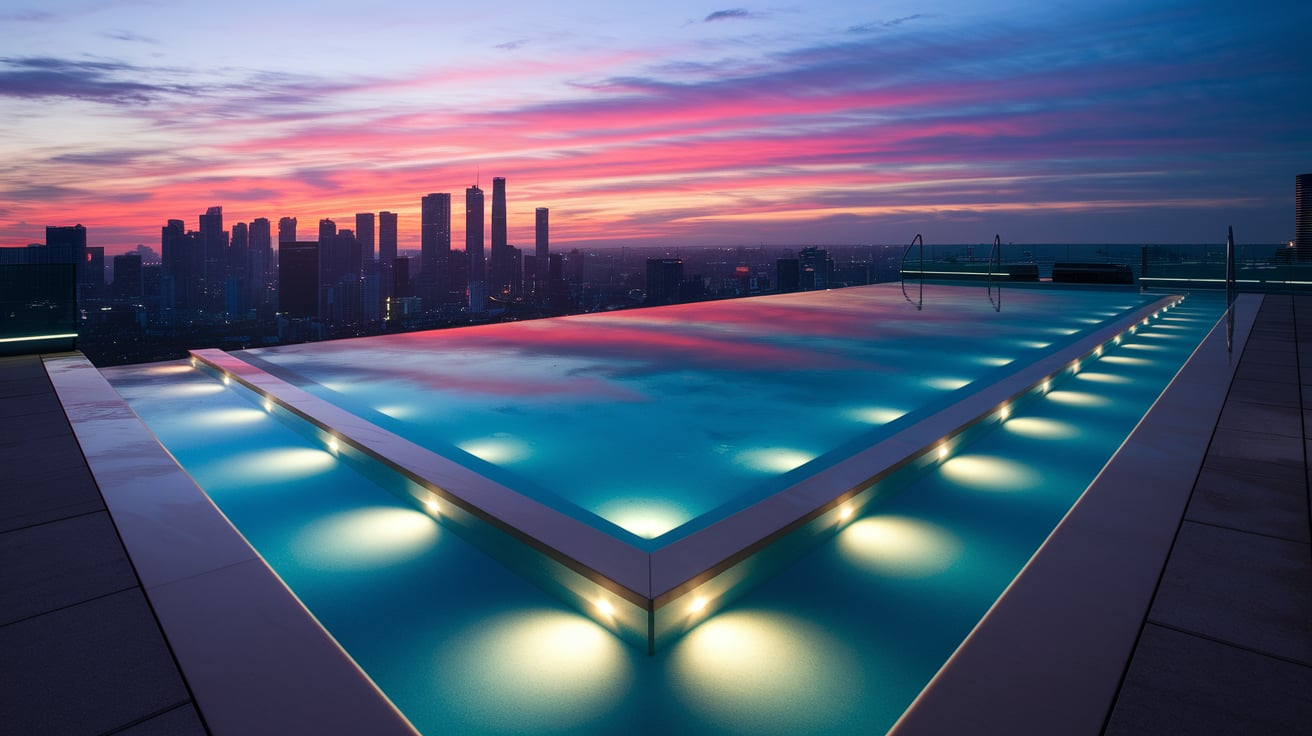
Thoughtful additions can significantly improve your swimming experience.
Built-in time clocks, lap counters, or even underwater speakers can enhance your workout routine. Consider wall-mounted exercise equipment for cross-training options when you’re not swimming laps.
Quick tips:
- Include plenty of electrical outlets near the pool for training equipment
- Install a small equipment storage cabinet near the pool deck
- Consider a pace clock visible from the water
- Add a thermometer to monitor water temperature for optimal swimming
Focus on additions that support your specific swimming goals rather than generic features.
Lap Pool Size Guide for Different Applications
Your lap pool sizing needs may vary depending on your specific swimming application. Here are some suggestions for different scenarios.
Competitive Training: Optimizing for Performance
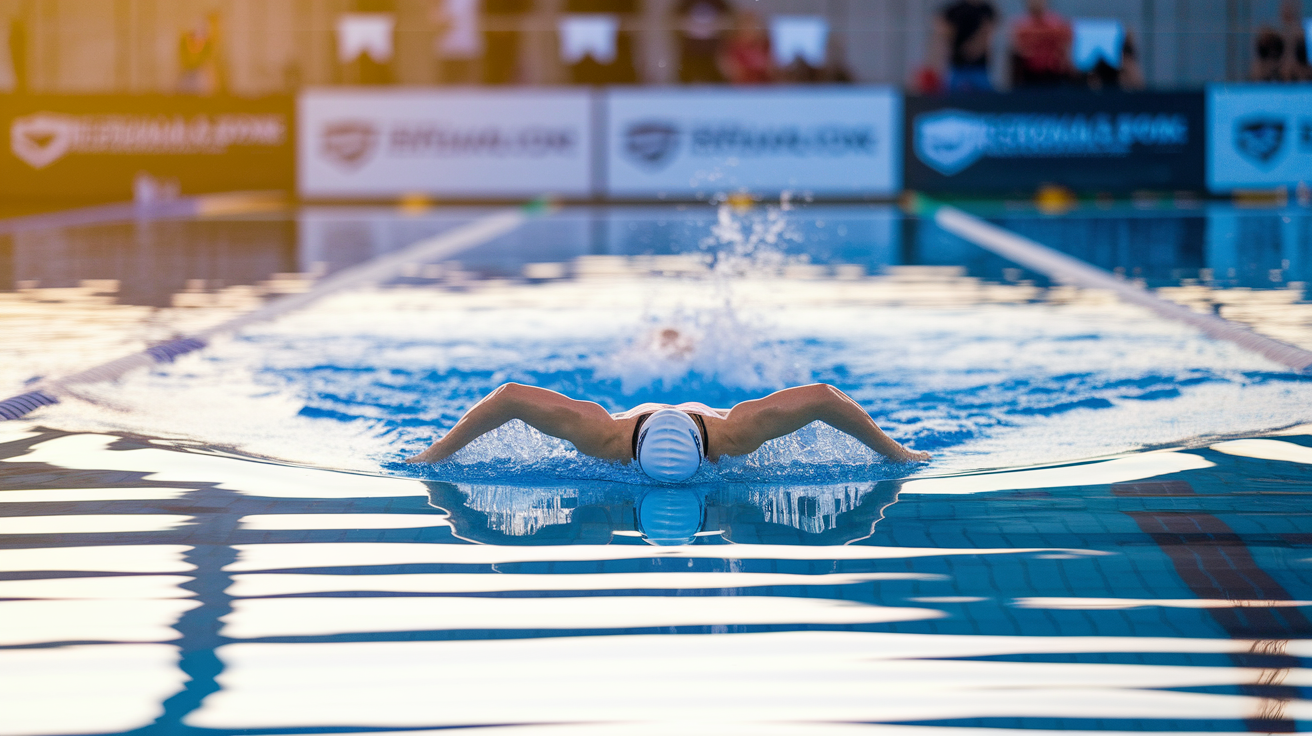
Serious competitive swimmers need specific dimensions for effective training.
The standard short-course competitive pool is 25 meters (82 feet), though 25 yards (75 feet) is common in the United States. The width should accommodate at least one standard 2.5-meter (8.2-foot) lane.
For training purposes, competitive depth (at least 6 feet) isn’t strictly necessary, but a minimum depth of 4 feet is recommended for comfortably performing all strokes.
Important features:
- Non-slip starting wall at both ends
- Durable lane line on the bottom
- Pace clock visible from the water
- Adequate length for timing standard distances
Family-Friendly Lap Pools: Balancing Exercise and Play
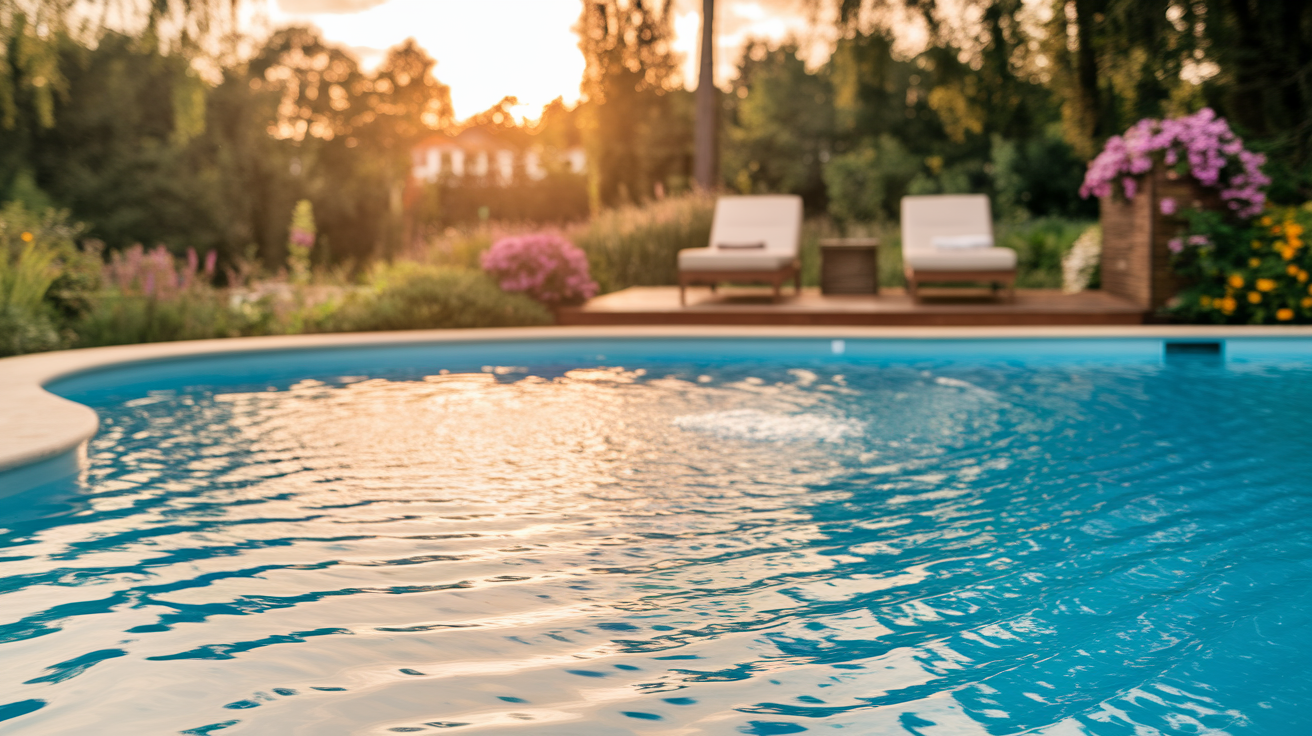
Multipurpose pools need thoughtful design to serve different needs.
A family pool that includes lap swimming generally starts at 30-35 feet in length but may be wider than a dedicated lap pool (10-12 feet) to accommodate recreational activities alongside the swimming lane.
Consider an L-shaped design with the shorter segment serving as a play area, or a rectangular pool with the lap lane along one side and a wider recreational area on the other.
Helpful additions:
- Clearly defined swimming lane with different flooring marking
- Removable lane divider rope for when formal separation is needed
- Variable depth design with shallow play area and deeper swimming section
- Wide entry steps that double as seating when not swimming laps
Limited Space Solutions: Making the Most of Tight Areas
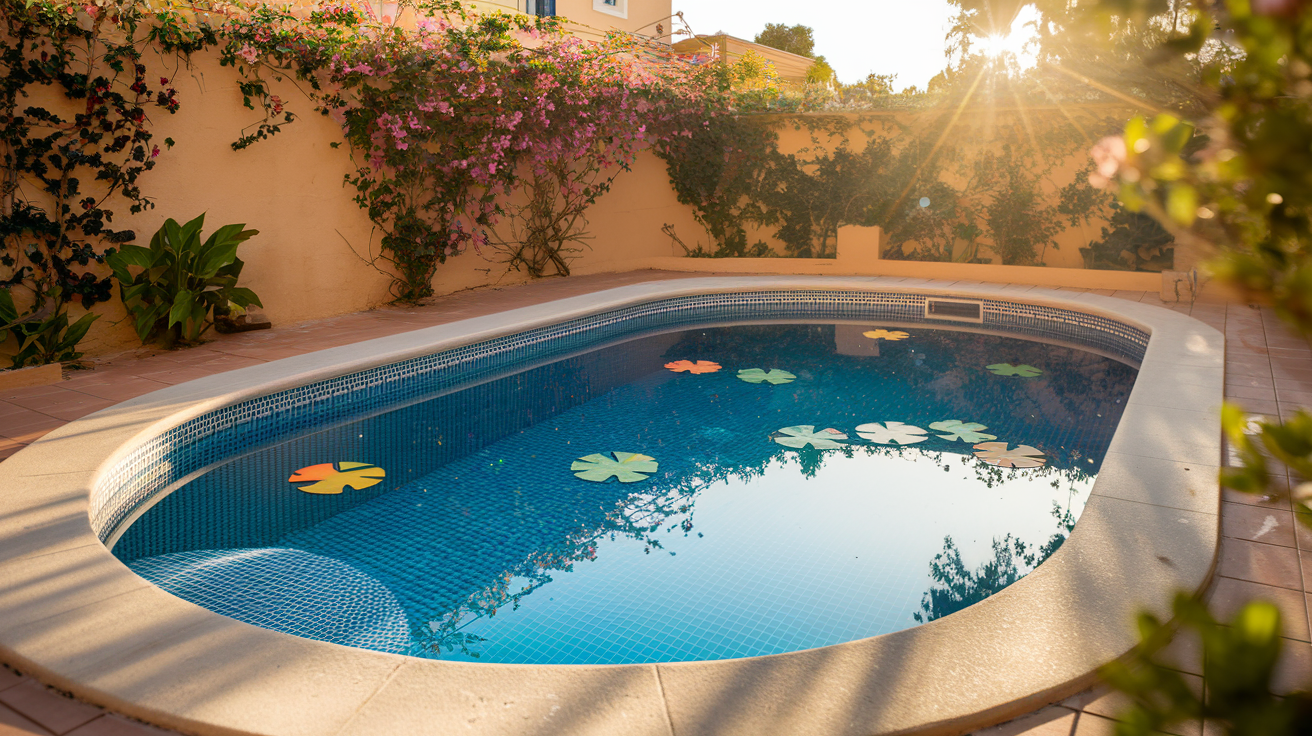
Even small properties can accommodate functional lap pools.
For very limited spaces, consider slim designs (as narrow as 6 feet) with lengths from 30-40 feet. Swim spas with counter-current systems can occupy as little as 12 feet in length while still providing resistance for continuous swimming.
Another space-saving option is an “endless pool” featuring a strong current system that allows swimming in place in a very compact footprint.
Space-maximizing strategies:
- Narrow but longer designs that prioritize the swimming length
- Counter-current systems for swimming in place
- Strategically placed equipment to minimize required decking
- Vertical landscaping around the pool to enhance the sense of space
Wrap-Up: Find Your Perfect Lap Pool Size
Creating the right lap pool isn’t about following rigid rules—it’s about finding what works for your specific needs and property.
The ideal lap pool balances proper dimensions with thoughtful design. A well-planned smaller pool often functions better than a poorly organized large one.
Remember key principles: ensure adequate swimming length, provide appropriate depth, position entry points strategically, and choose finishes that enhance your swimming experience. These elements matter more than simply maximizing size.
Consider how you actually plan to use your lap pool beyond just swimming.
Do you need space for water fitness, rehabilitation, or family recreation? These activities should guide your decisions about size and layout.

